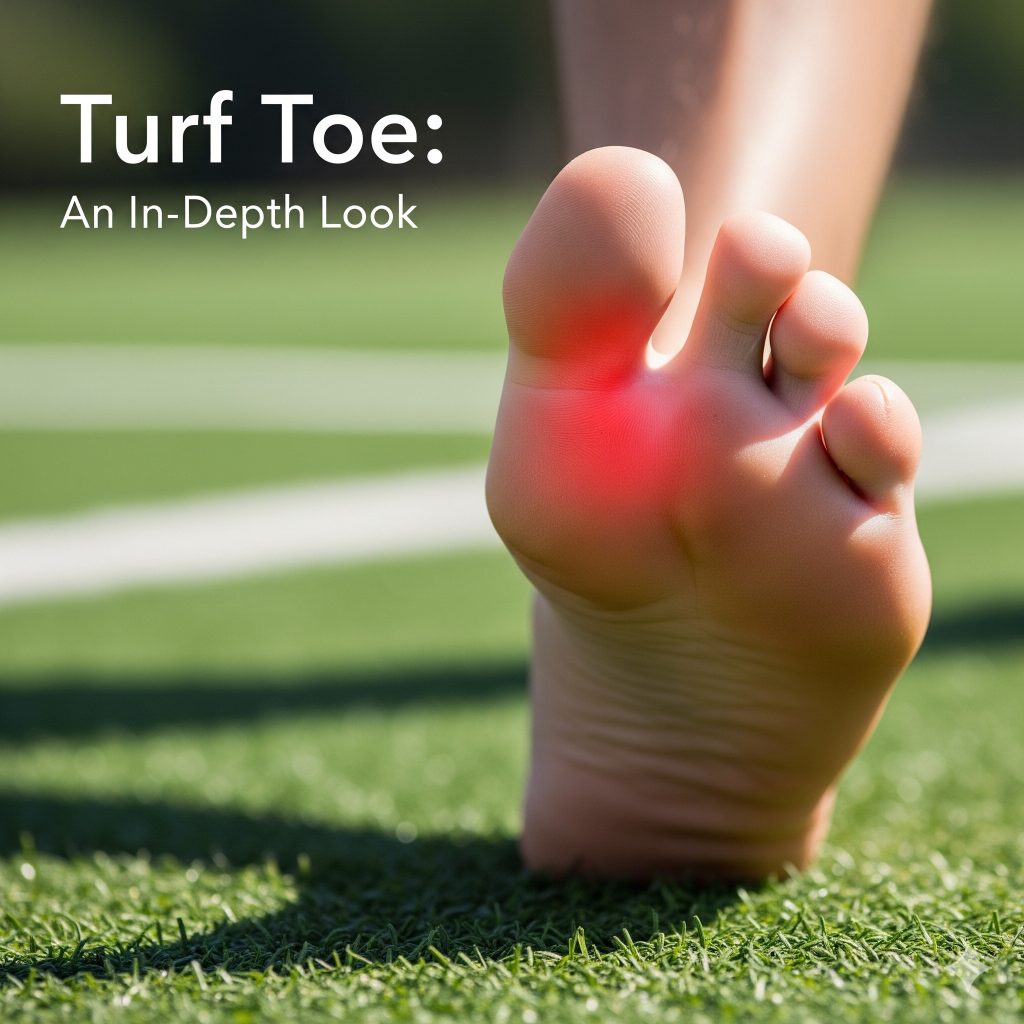What Is Turf Toe?
Turf toe is not just a quirky name; it’s an actual sports injury that affects the joint of the big toe. This condition typically arises due to significant stress on the joint, leading to a sprain. This sprain results when the big toe joint is extended beyond its normal range of motion. Athletes are often sidelined by this injury when they rapidly and repeatedly push off their big toes during running or jumping.
Origins and Risk Factors
The term “turf toe” has gained traction due to its prevalence in athletes who perform on artificial turf surfaces. The hard nature of these surfaces can cause the foot to stick and the toe to jam, leading to injury. The link between less supportive, more flexible footwear and the incidence of turf toe on these unforgiving surfaces is also noted.
Recognizing Turf Toe Symptoms
The classic indicators of turf toe are pain at the joint of the big toe, swelling in the area, and a reduction in joint mobility. Depending on the cause, the onset of these symptoms varies. In cases stemming from repeated stress, symptoms tend to develop progressively. Conversely, a direct impact or acute injury can trigger immediate symptoms that can intensify within the first day following the incident.
Diagnosis Approach
A diagnosis is crafted through a thorough evaluation by a foot and ankle surgeon, which includes a review of medical history and a physical examination of the foot. To definitively exclude fractures, X-rays are routinely performed, with the possibility of other imaging techniques being employed to ensure an accurate diagnosis.
Effective Treatment Strategies
The initial approach to managing turf toe aligns with the RICE protocol – rest, ice, compression, and elevation – coupled with a transition to stiffer, more supportive footwear to reduce strain on the toe joint. However, for more severe or chronic conditions, surgical intervention may be the advised course of action.




